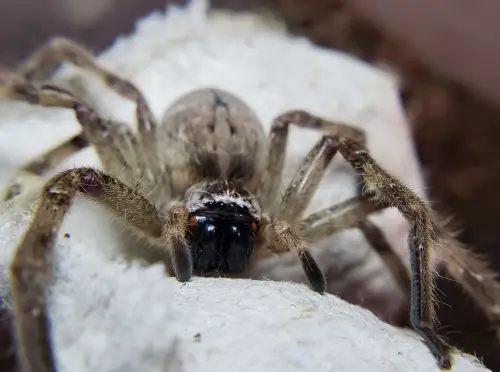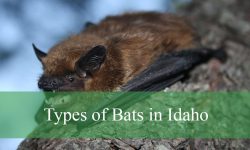There are numerous species of crab spiders worldwide, with an estimated number of over 2000 species described and classified to date. Crab spiders belong to the family Thomisidae, and they exhibit diversity in terms of shape, size, and color. Each species of crab spider typically possesses distinctive characteristics that distinguish them from other species.
In this article we will explore the characteristics and identification of Giant Crab Spider in Arizona.
How to identify Giant Crab Spider in Arizona

Giant Crab Spider, scientifically known as Olios giganteus, is a remarkable arachnid belonging to the family Hetropodidae, also known as Sparassidae. Among its various appellations, it is commonly referred to as the “huntsman,” while in Spanish, it goes by the name “cazadora del desierto.”
With its formidable appearance and impressive dimensions, this spider stands as one of the notable inhabitants of the local ecosystem. It boasts a leg span ranging from 2 to 2¼ inches (approximately 50 to 64 millimeters), rendering it one of the largest spider species found in the area. Its physical features typically exhibit a nuanced spectrum of medium to light brown hues, contributing to its ability to seamlessly blend into its surroundings.
A defining characteristic of the Giant Crab Spider is its peculiar behavioral tendency to extend its legs at right angles to its body, a habit that enhances its resemblance to the sideways movements of a crab. This peculiar trait accounts for the origins of its colloquial name, “crab” spider. Despite its substantial size, this arachnid demonstrates remarkable agility in navigating even smooth, vertical surfaces. It is not uncommon to spot this spider effortlessly scaling walls and, in some instances, even making itself at home on the ceilings of various human dwellings.
This unique climbing prowess serves as a crucial distinguishing feature when contrasting the Giant Crab Spider with its counterpart, the wolf spider, which lacks the capacity to scale smooth vertical terrains. This contrast is essential in taxonomy, enabling enthusiasts and researchers to differentiate between the two spider species based on their distinctive locomotive capabilities.
Distribution and Habitat of the Giant Crab Spider in Arizona
Despite its tropical origins, this spider species has successfully extended its habitat range, traversing a multitude of environments and making its home in various settings.
In the arid expanse of Arizona and Sonora, the Giant Crab Spider displays a remarkable proclivity for survival, thriving in habitats that range from the remnants of deceased saguaros to the sheltered spaces beneath rugged, sun-baked rocks. The sheltered confines beneath the rocks provide ideal hideouts for the spider, enabling it to await unsuspecting prey while remaining shielded from the harsh elements of the arid landscape.
Ecological characteristics of Giant Crab Spider in Arizona

The Giant Crab Spider, known for its adept hunting abilities, tends to wander in search of prey. By employing a strategic combination of calculated movements and lightning-fast reflexes, the spider relies on its exceptional speed to swiftly trap unsuspecting prey, ensuring vital nutrients for its survival.
During the day, the Giant Crab Spider cleverly conceals itself, using its unique physical attributes of its flat body to continuously infiltrate narrow gaps and fissures. This evolutionary adaptation serves as an important defensive mechanism, allowing the spider to evade potential hidden threats and unfavorable environmental conditions while patiently waiting for nightfall to hunt.
Although the spider’s bite is known to cause a painful reaction, it is reassuring that it poses minimal danger to human health. Despite its highly potent venom, the spider’s bite typically elicits discomfort rather than a severe impact on human well-being.
Furthermore, the life cycle of the Giant Crab Spider is characterized by a distinctive transient settlement pattern, primarily observed during the crucial phase of egg-laying. During this pivotal phase, female spiders meticulously produce and protect relatively large egg sacs, assuming the role of dedicated guardians as they carefully shield their developing offspring. Concealed within the safety confines of their habitat, these egg sacs serve as a sanctuary for the next generation, meticulously protected by the maternal instincts of the female spider until the hatching period.
People Who Read This Also Read:






